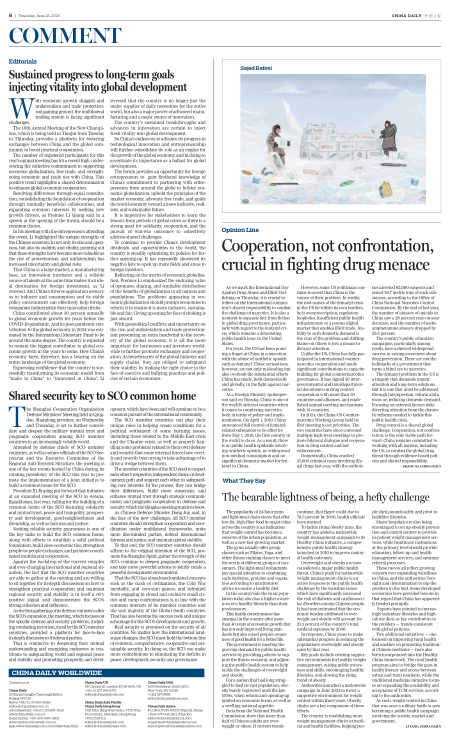The popularity of 24-hour gyms and light-meal chain stores that offer low-fat, high-fiber food in major cities across the country is an indication that weight control has become a concern of the urban population, as well as a new fast-growing market.
The gyms usually offer group classes such as Pilates, Yoga, and other fitness training classes to meet the needs of different groups of consumers. The light-meal restaurants pay special attention to combining carbohydrates, proteins and vegetables according to nutritionists' advice to ensure a healthy diet.
In the countryside the rural population today also has a higher awareness of a healthy lifestyle than their predecessors.
This health consciousness has emerged in the country after more than 40 years of economic growth that has not only improved living standards but also raised people's awareness of good health for a better life.
The government is meeting the growing demand for public health services by providing policies to support the fitness economy and adjusting the public health system to help tackle the challenges of overweight and obesity.
For a nation that had long struggled to feed its vast population, obesity barely registered until the late 1970s, when reform and opening-up ignited an economic boom, as well as a swelling national appetite.
Data from the National Health Commission show that more than half of Chinese adults are overweight or obese. If current trends continue, that figure could rise to 70.5 percent by 2030, health officials have warned.
To tackle rising obesity rates, the country has added a nationwide weight management campaign to its Healthy China initiative, a comprehensive public health strategy launched in 2019 to improve national health outcomes.
Overweight and obesity are now considered a major public health threat. China's push for nationwide weight management clinics is an active response to the public health challenge by the waistline issues which have significantly increased the risk of diabetes and cardiovascular disorders among Chinese people. It has been estimated that the economic burden attributed to overweight and obesity will account for 21.5 percent of the country's total medical expenses by 2030.
In response, China plans to make substantial progress in reducing the population's overweight and obesity rates by that year.
Key goals include creating supportive environments for healthy weight management, raising public awareness and skills, encouraging healthy lifestyles, and slowing the rising trend of obesity.
Authorities launched a nationwide campaign in June 2024 to foster a supportive environment for weight control within three years. Obesity clinics are a key component of these efforts.
The country is establishing more weight management clinics at medical and health facilities, helping people shed pounds safely and pivot to healthier lifestyles.
Major hospitals are also being encouraged to set up obesity prevention and control centers to provide in-patient weight management services, while healthcare institutions at the primary level should provide education, follow-up and health management services, and optimize referral processes.
These moves all reflect growing concern over expanding waistlines in China, and the authorities' foresight and determination to nip the problem in the bud. Some developed economies have provided lessons in that regard that China has apparently heeded promptly.
Experts have pointed to increasingly sedentary lifestyles and high-calorie diets as key contributors to the problem — trends consistent with global patterns.
Two additional initiatives — one focused on improving rural health and another on promoting traditional Chinese medicine — have also been incorporated into the Healthy China framework. The rural health program aims to bridge the gaps in health literacy and access between urban and rural residents, while the traditional medicine initiative focuses on expanding the availability and acceptance of TCM services, according to the authorities.
As such, weight control in China that was once a solitary battle is now becoming a public health campaign involving the society, market and government.

